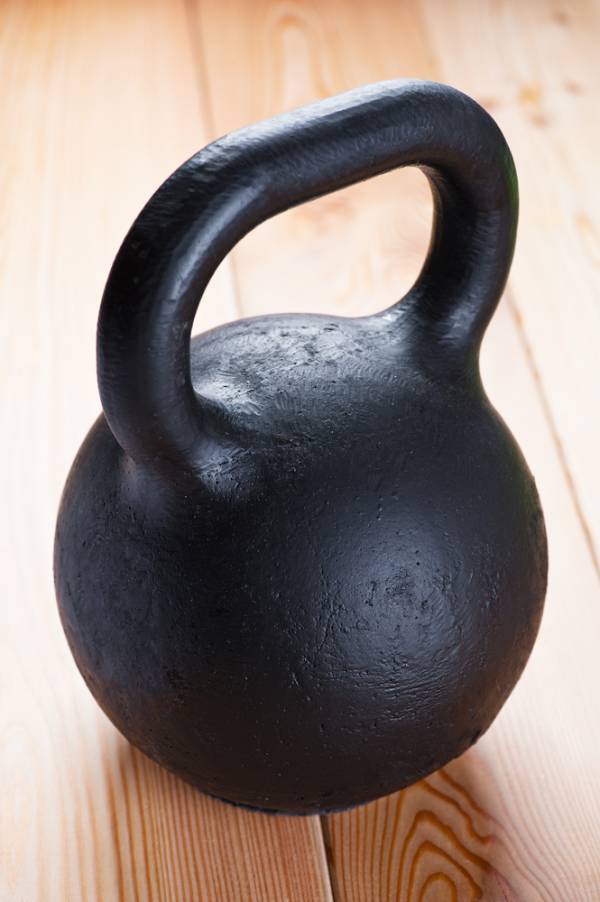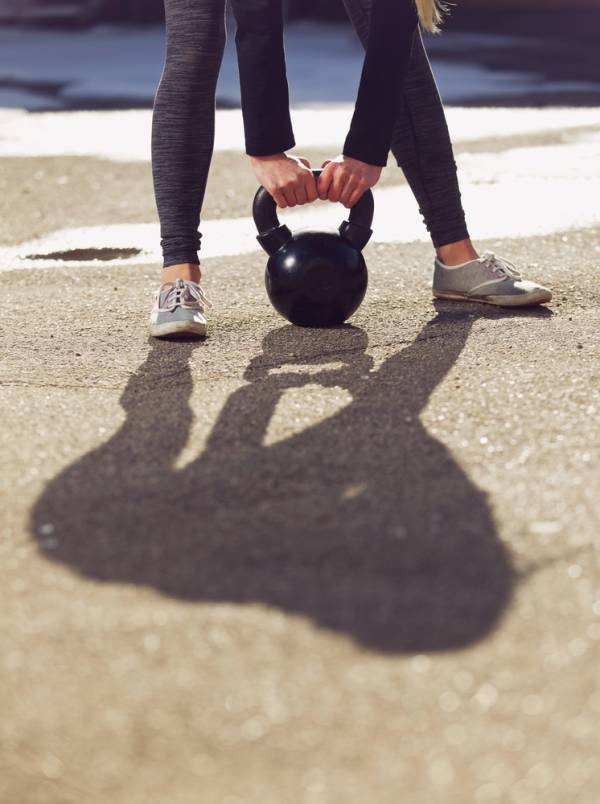The Program Minimum is one of the best-known kettlebell training plans around. As part of Pavel’s break-in plan for anyone starting to get into kettlebells it’s been done at some point by just about everyone who has turned to kettlebells.
The plan itself is fairly simple – alternating days of small volumes of swings and get ups. The swing days are done as intervals, doing swings to a point where your form is starting to go, then resting, for a total of twelve minutes. The get ups are done for five minutes on the other workout day. This format can be done on alternating days during the week, and with the low volume of work could be done almost daily, even by those who are fresh off the couch.
But that’s the minimum – the smallest amount of exercise worth doing, and a way to get used to training with kettlebells. What if you’re a seasoned trainee and want something besides the minimum?
Enter the Program Maximum
The end goal of the Program Maximum is simple – twenty minutes of get ups with the Beast (48kg bell) performing a rep per minute (alternating hands), followed by twenty minutes of one-hand swings with the Beast, performing ten reps on the minute, alternating hands each minute. Twenty total get ups with the 48kg followed by 200 one-hand swings.
Back when I used to teach personal training courses I’d always get asked what a beginner workout looked like, and I might say that squatting was a good beginner exercise. The students would then ask me what was a good advanced workout, and I’d say that squatting was an excellent choice. At this point the students would all think I was just being me – i.e. a total smart ass and making life hard for them – but the truth is that for a beginner learning the squat is a great choice. Whereas for an advanced trainee we’re not talking about learning to squat, we’re talking about squatting two to three times body weight. It’s still squatting but we’re talking about something completely different.
It’s all in the context.
And so it is with the Program Maximum. It’s still swings and get ups, which are often viewed as beginner exercises when it comes to kettlebells, but we’re talking about a very different context. There’s a running joke in the RKC that when we talk kettlebells to beginners we talk about swings and get ups. When we talk to intermediate trainees we talk about snatches, presses, and the like. But when we talk to advanced trainees we talk about swings and get ups. So let’s see just how far we can push this idea.
 One of the biggest problems for many trainees is building up their get ups. Get ups, to me, are a lot like the Olympic lifts when it comes to getting better at them. Unlike swings, where you can easily rack up a few hundred in a session, when it comes to get ups most people do a few – something like three to five per side – and they’re done. When you only do a few reps of something each week it’s going to take a long time to get good at it.
One of the biggest problems for many trainees is building up their get ups. Get ups, to me, are a lot like the Olympic lifts when it comes to getting better at them. Unlike swings, where you can easily rack up a few hundred in a session, when it comes to get ups most people do a few – something like three to five per side – and they’re done. When you only do a few reps of something each week it’s going to take a long time to get good at it.
So the first step is to increase the amount of time that you spend doing get ups. My all time favorite way to do this is to begin each training sessions with ten minutes of ten two-hand swings followed by a get up on each side. After a little while increase this to fifteen minutes and then to twenty. Train as planned after this warm up and you’ll find that very quickly your ability to handle more weight in all exercises is increased.
You can follow this method up to about 40kg for both swings and get ups and then you’ll start to need something a little more complex, and you will probably need to spend some time working on some weak areas within the get up. To accomplish this I like to spend some time breaking down the get up once per week. A typical session might like this:
First series:
- Roll to press and return bell to floor
- Half sit to elbow and return to floor
- Tall sit and return to floor
- Kneeling windmill and return to floor
- Lunge position and return to floor
- Full rep
- Switch hands and repeat
Second series:
Three get ups each side without putting the bell down. You’ll need a lighter bell for this. Do a full rep and return to the floor, the only difference is that you won’t put the bell down between reps. This is fantastic for building the grip and shoulder strength needed for really heavy get ups.
Third series:
Heavy single get up on each side.
Repeat the three series for up to forty minutes and finish with your twenty minutes of swings as planned. I’d suggest that if you were using the 40kg for your heavy singles that you’d want a 32kg for the first series, a 24-28kg bell for the second, and the 40kg for the singles. In forty minutes you should get through three full rounds. Any faster than that and you’re not going heavy enough. Realistically, a heavy get up will take you about thirty seconds and then you’ll need a decent rest afterwards before you can do the other side.
 I’d do that workout three days per week including the swings. On the off days I’d do some easy running or walking, some pull-ups, and a lot of mobility work. I’d then do a session on the Saturday that was 100 get ups with a light bell. Yes, you read that right – a hundred get ups. If you’re using a 40kg bell for the heavy singles something like a 24kg will work well here. Think of this as the get up equivalent of going for a long walk. It should be easy and refreshing, not a strenuous workout. This is loaded mobility and you should feel the same after as if you did a big yoga workout.
I’d do that workout three days per week including the swings. On the off days I’d do some easy running or walking, some pull-ups, and a lot of mobility work. I’d then do a session on the Saturday that was 100 get ups with a light bell. Yes, you read that right – a hundred get ups. If you’re using a 40kg bell for the heavy singles something like a 24kg will work well here. Think of this as the get up equivalent of going for a long walk. It should be easy and refreshing, not a strenuous workout. This is loaded mobility and you should feel the same after as if you did a big yoga workout.
To warm up for this workout I would do some single-leg deadlifts, goblet squats, and various lightly loaded carries for about ten minutes. I think you’ll be surprised exactly how much you can get out of these two seemingly easy exercises when you really add some load and spend more time on them beyond the bare minimum.
Photos courtesy of Shutterstock.






